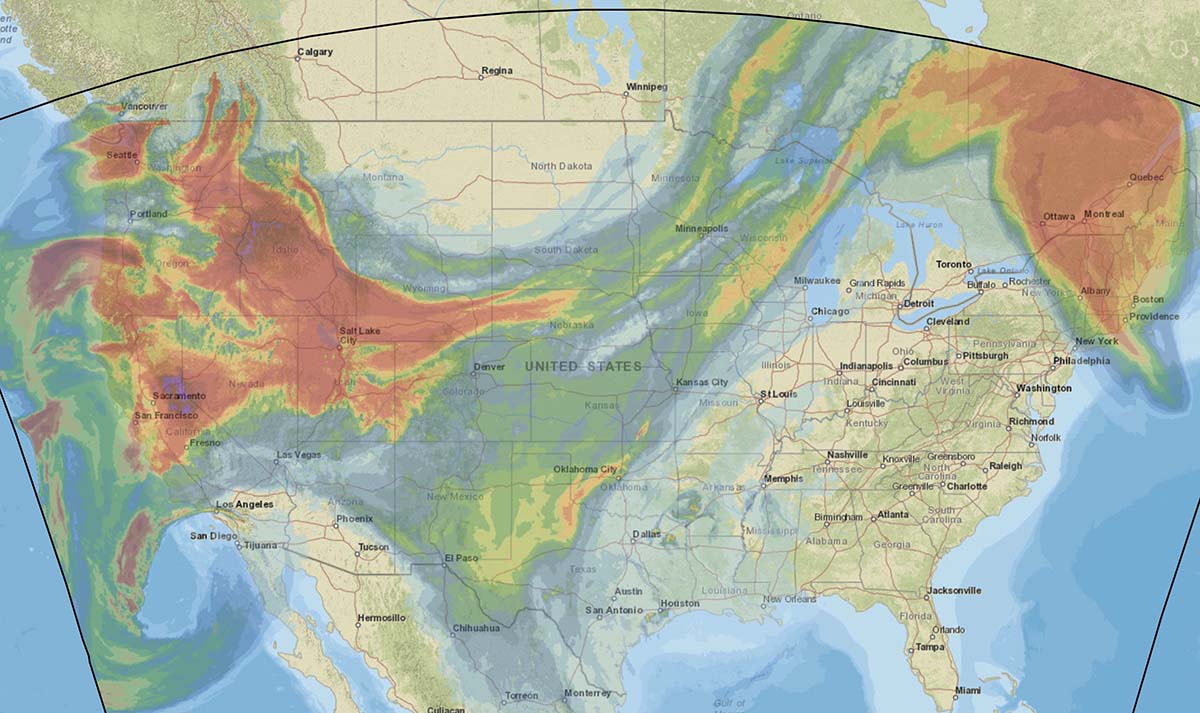
Smoke from wildfires is expected to affect most of the Western United States Friday and Friday night.
Red Flag Warnings for extreme fire danger on Friday are posted for areas of Washington, Oregon, and California.
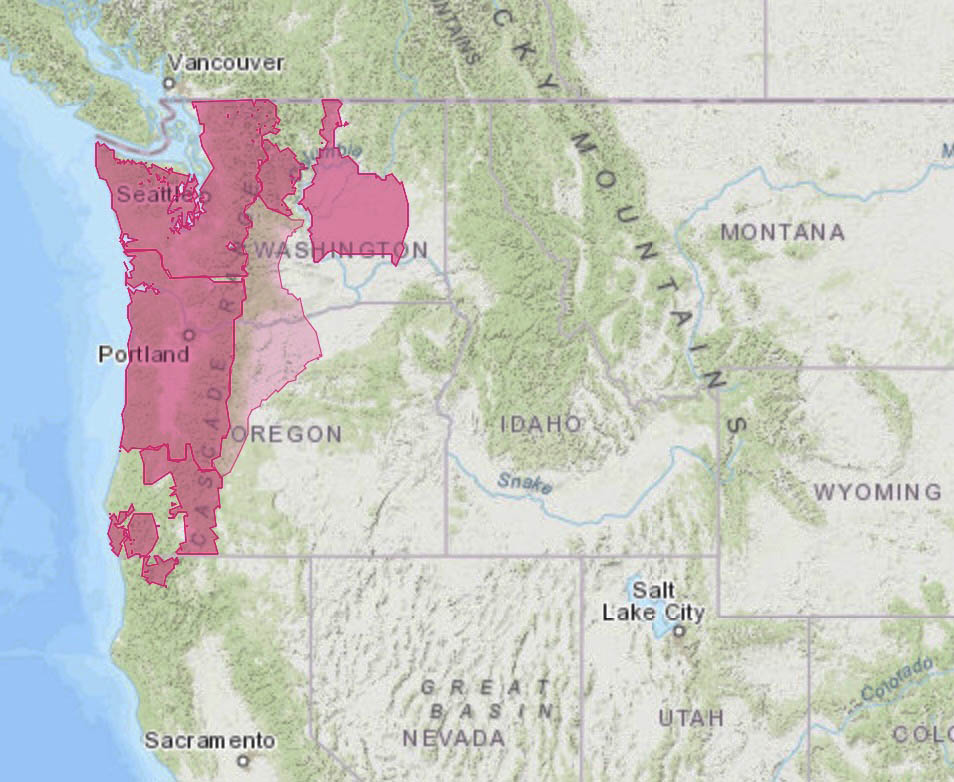
News and opinion about wildland fire

Smoke from wildfires is expected to affect most of the Western United States Friday and Friday night.
Red Flag Warnings for extreme fire danger on Friday are posted for areas of Washington, Oregon, and California.

About 25 percent of the states’ forestland burned in the last 10 years — more than triple the previous decade
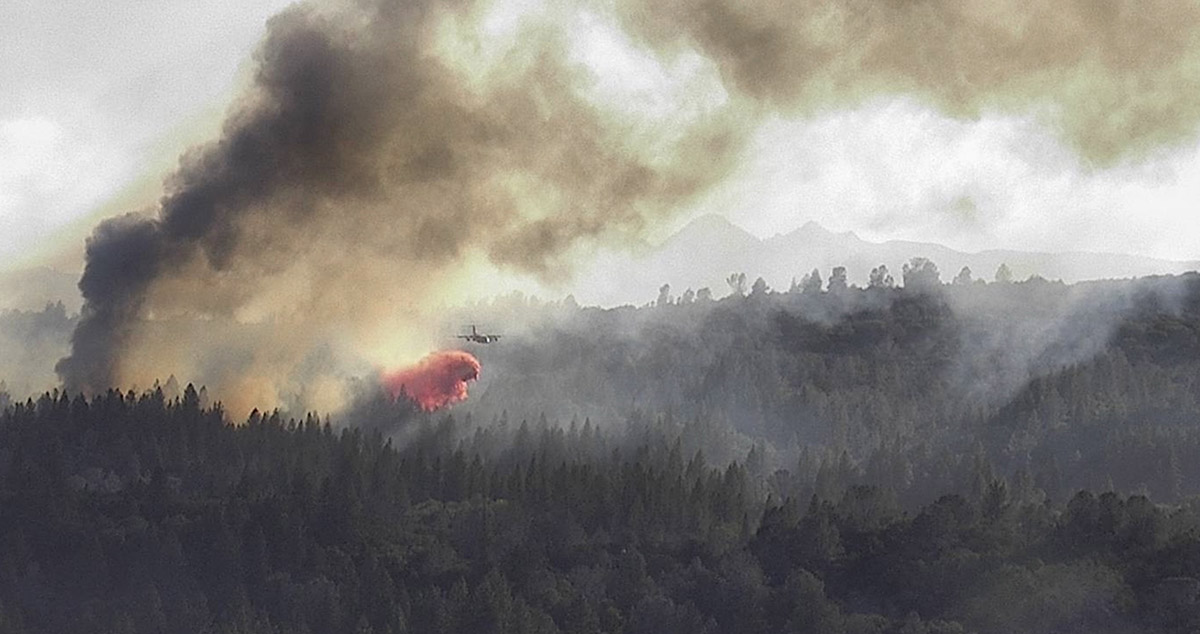
By Jim Schmidt
Of the 32.1 million acres of forestland in California, approximately 2.1 million acres (6.6%) burned in wildfires in the 2002-2011 time period. In the following decade (2012-2021), that figure more than tripled to 7.9 million acres (24.7%).
National Forests in California were particularly hard hit. 10.1% of 12.7 million acres of forestland managed by the USDA Forest Service in California burned in 2002 – 2011 time period. In the 2012 – 2021 decade that figure increased to 38.8%. Excluding areas that re-burned in the last 10 years, 44.5% of the forestland in California National Forests has burned in the last 20 years. In contrast, only 22.6% of National Park forestland in the state has burned in the same time period. About 14 million acres of forestland in California are in private hands. 17.0 % of private forestland has burned since 2001.
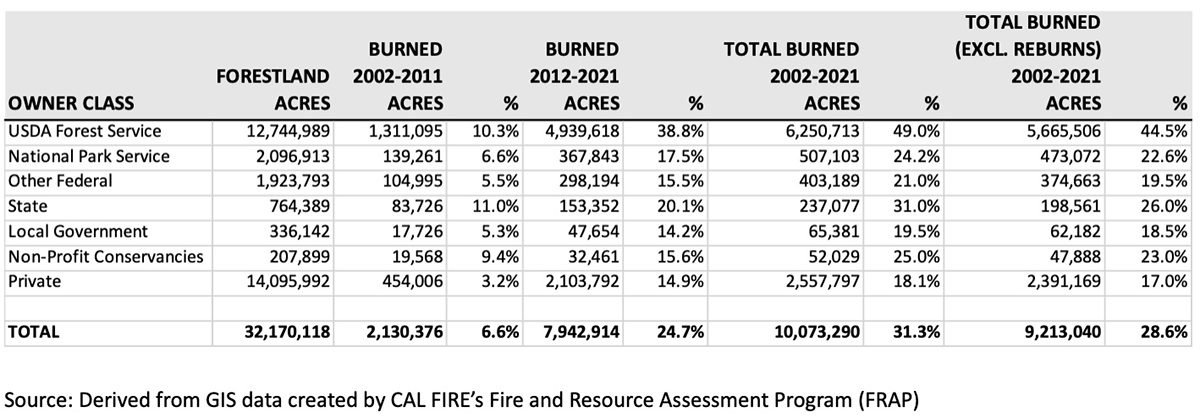
The following maps display the forestland areas and the areas that have burned in California in the last two decades. Fires were concentrated in Southern California in the 2002-2011 time period and in Northern California in the last 10 years.
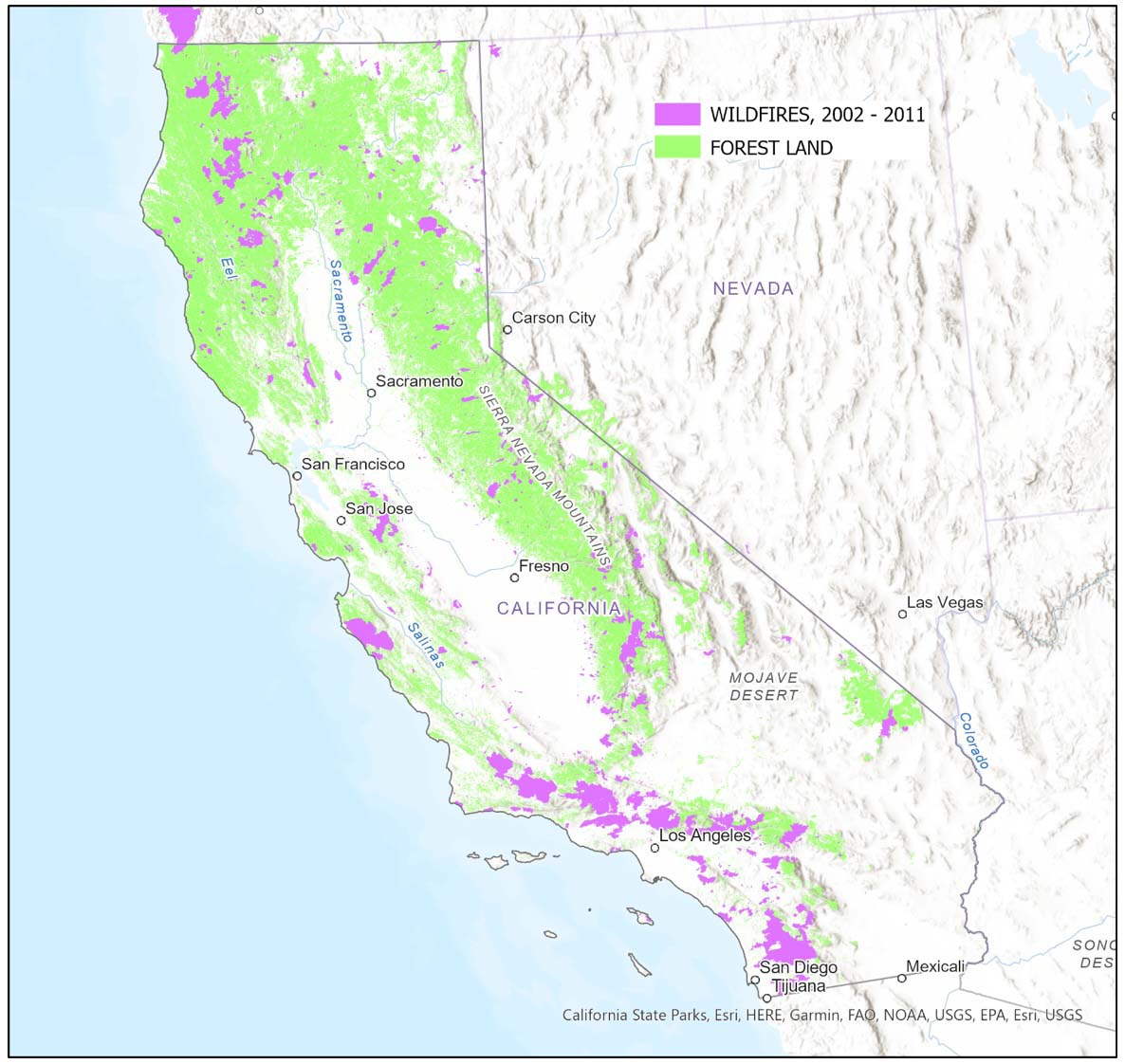
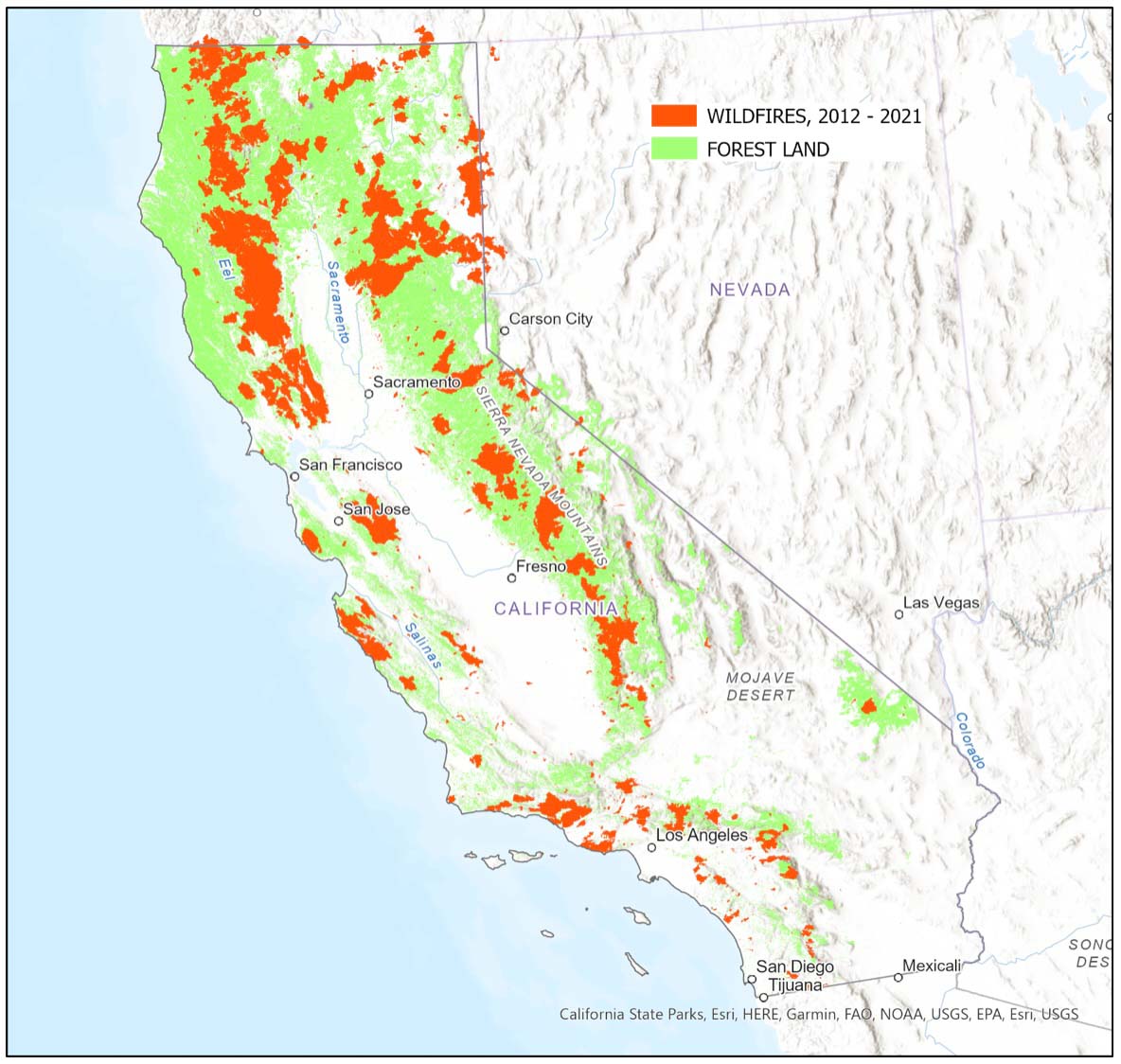
The article was edited September 7 with revised figures to account for areas that reburned, which account for about 5% of the forestland burned on National Forests in the last 20 years.
Jim Schmidt retired from the Stanislaus National Forest where he worked as a GIS specialist.
Mitigating destruction in the home ignition zone
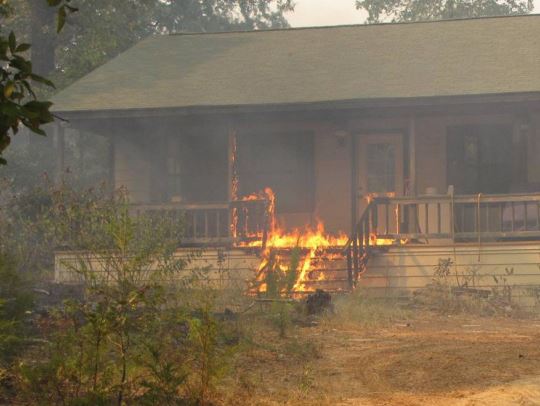
This is a portion of an article first published at Headwaters Economics in July, 2022. It is used with permission here.
Increasing home loss and growing risks require reevaluating the wildfire crisis as a home-ignition problem and not a wildland fire problem. A home’s building materials, design, and nearby landscaping influence its survival. Together with the location, arrangement, and placement of nearby homes, constructing a wildfire-resistant home is critical in light of rising wildfire risks. This report compares the cost of constructing a home to three different levels of wildfire resistance in California.
California is a leader in the country with a statewide building code and other property-level vegetation requirements addressing wildfire impacts to the built environment. Applicable to all new developments located in State Responsibility Areas (SRAs) and the highest fire severity zones in Local Responsibility Areas (LRAs), California’s Building Code Chapter 7A is intended to reduce the vulnerability of homes to wildfire.
Yet given the magnitude of California’s wildfire risks and increasing home development in wildfire-prone areas, constructing a home beyond Chapter 7A requirements may be needed to ensure greater wildfire resistance. Understanding the comparative costs of wildfire-resistant home construction in California can inform future wildfire policy and decision-making.
This report compares the costs for constructing three different versions of a wildfire-resistant home in California:
Building materials and assemblies for five primary home components were considered, including:
Cost estimates for individual building materials were provided through RSMeans, a national database of construction costs for residential, commercial, and industrial construction. Cost estimates included building material, labor, equipment, and contractor overhead costs such as transportation and storage fees.
In northern and southern California, building an Enhanced wildfire-resistant home increased construction costs by approximately $2,800 over the Baseline home. Constructing a home to Optimum wildfire resistance increased overall costs by $18,200 in northern California and by $27,100 in southern California.
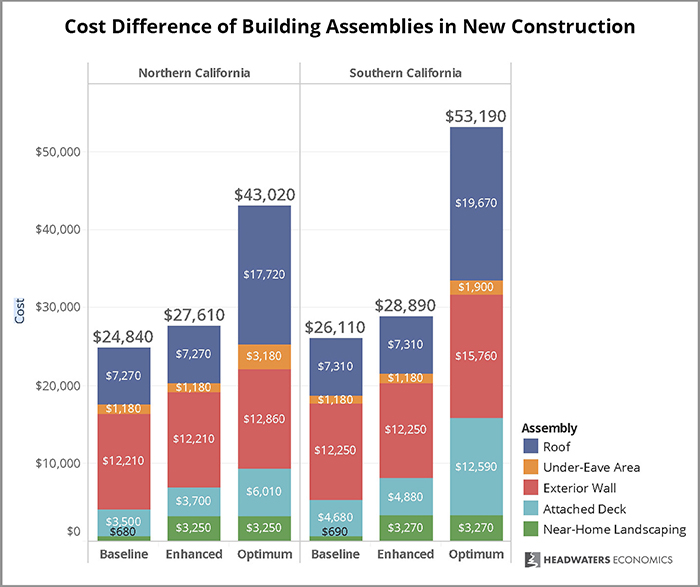
Although the Optimum home was more expensive to build, it is likely that the increased costs will return greater long-term benefits in energy efficiency and durability. The roof, exterior walls, and near-home landscaping added the largest proportional increases to building costs. Each of the five components is described in more detail below.
Read the entire article at Headwaters Economics.
24 air miles south of McCall
12:21 p.m. MDT August 28, 2022

The Four Corners Fire 24 air miles south of McCall, Idaho grew by about 1,000 acres Saturday as winds gusting up to 33 mph from a cold front caused more intense burning. The blaze is near the southeast side of Lake Cascade and Saturday night was about 0.3 miles from the shore and about 0.1 mile from Old State Highway/W. Mountain Road.
In spite of challenging winds and smoke, firefighters reported good progress in building firelines on the western and northern sides on Saturday. Crews constructing handline have reached Wilson Peak from the west side and will continue progressing to the east directly along the fire perimeter as long as it is safe, as they evaluate additional actions to limit the spread.

On Sunday, crews will continue to maintain structure protection efforts on the east side. To the south, fire managers expect little fire spread to the west. Calmer winds will prevail across the area with drier conditions and light southwest winds up to 10 mph. Sunday and Monday fire activity is expected to be slower due to cooler temperatures in the 70s with light winds. Starting Tuesday fire activity will increase as temperatures and stronger winds gradually increase, peaking on Thursday. Fire managers expect critical fire weather conditions by the end of week.
Evacuations are in effect. The Valley County Sheriff’s Office has the details.


This week the California Governor’s Office of Emergency Services (Cal OES) and the California Military Department announced the creation of the first all-hazards fire engine strike team operated by a state military department.
Cal OES is deploying a Type 6 strike team of wildland-style fire engines, named Team Blaze, to the State Military Department to enhance California’s Fire and Rescue Mutual Aid fleet.
These four-person engines complement the Military Department’s existing Task Force Rattlesnake hand crew program consisting of Soldiers and Airmen. Since the start of operations in 2019, Task Force Rattlesnake has cut, cleared and treated at-risk wildfire project areas in central and northern of California.
The State’s Military Department maintains a firefighting program at their military bases, with trained personnel providing firefighting prevention, mitigation and protection services to California and military bases and camps.
“We are proud to collaborate with Cal OES to ensure there’s another fleet of fire engines and expert staff at the ready,” said California Military Department Major General Matthew P. Beevers. “This Strike Team builds upon the state’s response efforts during times of need.”

These engines add to the existing California Fire and Rescue Mutual Aid System fleet of more than 270 engines across 60 local partners statewide that can respond to incidents of all types.
Cal OES facilitates the California Fire and Rescue Mutual Aid System, which moves local government resources across the state in support of all-risk emergency response on behalf of local, state, and federal government fire organizations. Cal OES assigns local government fire agencies with fire apparatus to maintain surge capacity during day-to-day duties and major events/emergencies.
Or was it a fire tornado?
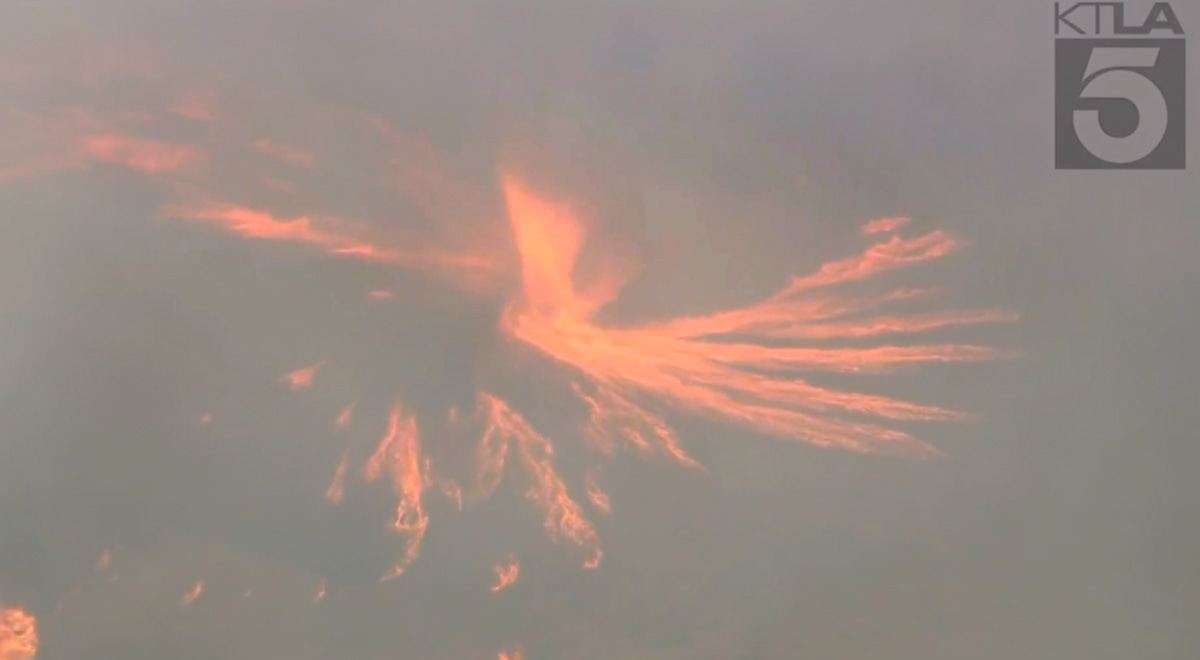
On August 11 we wrote about an impressive fire whirl (or fire tornado) that occurred on the Sam Fire in northwestern Los Angeles County August 10. Thankfully a helicopter from KTLA 5 was airborne and got compelling video, including a water drop from an Air-Crane helicopter that at least for a few seconds took most of the energy out of the rapidly rotating vortex of flame.
Here is the video:
Unfortunately the video stops immediately after the water drop so it is unknown if it regenerated.
In describing the event, we wrote, “Maybe a helicopter pilot can tell us how ballsy it was, or was not, to fly close enough to drop water on the fire whirl.”
Now we know who made the drop.
Erickson’s Pilot in Command flying the Air-Crane that is seen dropping water, Ed Montgomery, was quoted in Erickson Incorporated’s Twitter feed, @EricksonInc. Below is the text from a series of six tweets:
What I can tell you is that those types of situations are very intense, for not only the aircraft on the fire but also for the firefighters that are on the ground. Fire tornadoes can and often do throw fire balls out in front of the fire and the threat in this particular instance, was that the highway was the fire line, and the tornado was approaching the highway. If it had been allowed to advance it would have certainly spotted fire across the highway and turned a 140 acre fire into a much larger incident.
We were fortunate to have had N163AC as our aircraft – it has our new composite blades installed and we were at the last quarter of our fuel cycle. This means we were able to pick up 2,300 gallons of water for that drop.
As you can see from the video, fire tornadoes create a tremendous amount of inward air flow to its core. All I really needed to do was get in front of it while it was in the open, be away from the heat column, and high enough for the tornado to suck the entire water drop into its core.
The phenomenon was either a fire whirl or fire tornado. It is difficult to tell from the video the width or height of the vortex. It appears not to be huge, but the speed of the rotation was extremely swift and the area influenced by the strong indrafts was very large. At the one minute mark check out the spot fires that ignite and instantly grow much larger as they are drawn toward the vortex.
Fire whirls, much like dust devils, are not uncommon on a fire when the atmosphere is unstable, and are much smaller than fire tornados. In 1978 a researcher for the National Weather Service in Missoula, David W. Goens, established parameters for the two.
He said the average size of a fire whirl is usually 33 to 100 feet, with rotational velocities of 22 to 67 MPH.
But a fire tornado dominates the large scale fire dynamics. They lead to extreme hazard and control problems. In size, they average 100 to 1,000 feet in diameter and have rotational velocities up to 90 MPH.